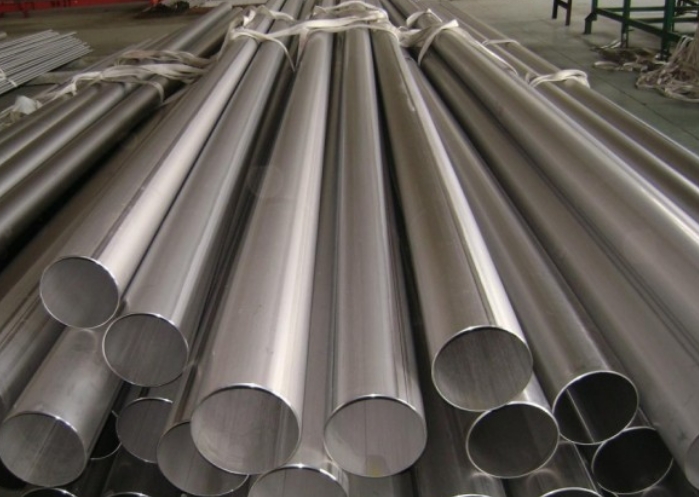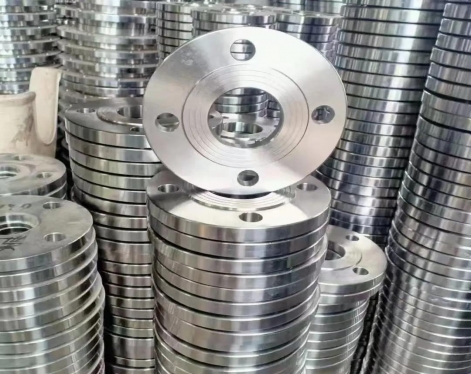What is solution treatment
Solution treatment refers to a heat treatment process in which the alloy is heated to a high temperature and maintained at a constant temperature in the single-phase region, so that the excess phase is fully dissolved into the solid solution and then rapidly cooled to obtain a supersaturated solid solution.
Because the operation process is similar to quenching, it is also called "solid solution quenching". It is suitable for alloys with solid solution as the matrix and whose solubility changes greatly when the temperature changes. First, the alloy is heated to a suitable temperature above the solubility curve and below the solidus line and kept for a certain period of time to allow the second phase to dissolve into the solid solution. Then it is rapidly cooled in water or other media to inhibit the re-precipitation of the second phase, and a supersaturated solid solution at room temperature or a solid solution phase that usually only exists at high temperatures can be obtained. Because it is in a thermodynamically metastable state, desolvation or other transformations will occur under appropriate temperature or stress conditions. It is generally a preparatory heat treatment, and its function is to prepare the best conditions for subsequent heat treatment.

Effect of stainless steel seamless pipe solution treatment
1. Make the arrangement and composition of stainless steel seamless pipes uniform
This is especially important for raw materials, because the rolling temperature and cooling rate of each section of hot-rolled pipe are different, resulting in inconsistent structures. At high temperatures, the economic activity of atoms is intensified, and the chemical composition tends to be uniform. After rapid cooling, a more uniform single-phase organization is obtained.
2. Eliminate work hardening to allow continued cold working
Through solid solution treatment, the distorted lattice structure is restored, the elongated and broken grains begin to crystallize again, the internal stress is eliminated, the tensile strength of the steel wire continues to decrease, and the elongation gradually increases.
3. Restore the inherent corrosion resistance of stainless steel pipes
Due to the formation and separation of carbides during cold working, lattice defects reduce the corrosion resistance of stainless steel pipes. After solution treatment, the corrosion resistance of stainless steel seamless pipes is restored to its best state.
Three factors for solid solution of stainless steel seamless pipes
The quality of the solid solution process of stainless steel seamless pipes has a great influence on the corrosion resistance and appearance brightness of stainless steel, and also plays a decisive role in the processing performance of stainless steel. Therefore, the heat treatment process of stainless steel plays an important role in the production of stainless steel seamless pipes. plays a very important role.
1. Solid solution temperature. According to the characteristics of the chemical composition of stainless steel, the solid solution temperature of stainless steel must be between 950-1150 degrees Celsius to achieve the softening effect. Reduce the hardness of stainless steel to below 220HV and meet the quality requirements of the pipeline. If the temperature control is unreasonable, various quality defects are prone to occur.
2. Solid solution time. During the heating process of austenitic stainless steel, the residual ferrite content in the steel decreases with the extension of heating time. Therefore, the solution treatment of stainless steel pipe fittings should be controlled at around 1050°C to saturate the carbon and improve corrosion resistance. sex. Then rapidly cool in air to achieve solid solution effect.
3. Solid solution speed and heat preservation. The thermal conductivity of stainless steel is very low. The thermal conductivity at room temperature is only 27% of that of carbon steel. Therefore, the process of heating stainless steel at low temperatures should be slow. If the heating speed is too fast, deformation will easily occur. The heating speed of stainless steel in solid solution should be controlled within a certain range, and the heat preservation time should be paid attention to. For example, if the temperature of 316L steel is around 1100℃ and the holding time is long, the content of residual ferrite will continue to decrease.
Solution treatment refers to a heat treatment process in which the alloy is heated to a high temperature and maintained at a constant temperature in the single-phase region, so that the excess phase is fully dissolved into the solid solution and then rapidly cooled to obtain a supersaturated solid solution.
Because the operation process is similar to quenching, it is also called "solid solution quenching". It is suitable for alloys with solid solution as the matrix and whose solubility changes greatly when the temperature changes. First, the alloy is heated to a suitable temperature above the solubility curve and below the solidus line and kept for a certain period of time to allow the second phase to dissolve into the solid solution. Then it is rapidly cooled in water or other media to inhibit the re-precipitation of the second phase, and a supersaturated solid solution at room temperature or a solid solution phase that usually only exists at high temperatures can be obtained. Because it is in a thermodynamically metastable state, desolvation or other transformations will occur under appropriate temperature or stress conditions. It is generally a preparatory heat treatment, and its function is to prepare the best conditions for subsequent heat treatment.

Effect of stainless steel seamless pipe solution treatment
1. Make the arrangement and composition of stainless steel seamless pipes uniform
This is especially important for raw materials, because the rolling temperature and cooling rate of each section of hot-rolled pipe are different, resulting in inconsistent structures. At high temperatures, the economic activity of atoms is intensified, and the chemical composition tends to be uniform. After rapid cooling, a more uniform single-phase organization is obtained.
2. Eliminate work hardening to allow continued cold working
Through solid solution treatment, the distorted lattice structure is restored, the elongated and broken grains begin to crystallize again, the internal stress is eliminated, the tensile strength of the steel wire continues to decrease, and the elongation gradually increases.
3. Restore the inherent corrosion resistance of stainless steel pipes
Due to the formation and separation of carbides during cold working, lattice defects reduce the corrosion resistance of stainless steel pipes. After solution treatment, the corrosion resistance of stainless steel seamless pipes is restored to its best state.
Three factors for solid solution of stainless steel seamless pipes
The quality of the solid solution process of stainless steel seamless pipes has a great influence on the corrosion resistance and appearance brightness of stainless steel, and also plays a decisive role in the processing performance of stainless steel. Therefore, the heat treatment process of stainless steel plays an important role in the production of stainless steel seamless pipes. plays a very important role.
1. Solid solution temperature. According to the characteristics of the chemical composition of stainless steel, the solid solution temperature of stainless steel must be between 950-1150 degrees Celsius to achieve the softening effect. Reduce the hardness of stainless steel to below 220HV and meet the quality requirements of the pipeline. If the temperature control is unreasonable, various quality defects are prone to occur.
2. Solid solution time. During the heating process of austenitic stainless steel, the residual ferrite content in the steel decreases with the extension of heating time. Therefore, the solution treatment of stainless steel pipe fittings should be controlled at around 1050°C to saturate the carbon and improve corrosion resistance. sex. Then rapidly cool in air to achieve solid solution effect.
3. Solid solution speed and heat preservation. The thermal conductivity of stainless steel is very low. The thermal conductivity at room temperature is only 27% of that of carbon steel. Therefore, the process of heating stainless steel at low temperatures should be slow. If the heating speed is too fast, deformation will easily occur. The heating speed of stainless steel in solid solution should be controlled within a certain range, and the heat preservation time should be paid attention to. For example, if the temperature of 316L steel is around 1100℃ and the holding time is long, the content of residual ferrite will continue to decrease.









